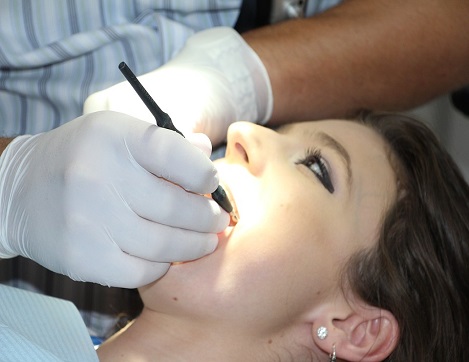Types of Oral Infections: Have You Noticed the Signs
 Ouch! Oral infections can be painful experiences. By familiarizing yourself with the signs of common oral infections, you can be better prepared to seek treatment and prevent these painful infections from progressing and permanently impacting your oral health. Let’s take a look at the causes, symptoms, and treatments for some of the most common oral infections
Ouch! Oral infections can be painful experiences. By familiarizing yourself with the signs of common oral infections, you can be better prepared to seek treatment and prevent these painful infections from progressing and permanently impacting your oral health. Let’s take a look at the causes, symptoms, and treatments for some of the most common oral infections
Viral Infections
Oral herpes is a highly contagious viral infection that causes flu-like symptoms and blisters in and around the mouth. The virus will eventually become dormant and the symptoms will end, but the virus will remain in your body.
Hand, Foot, and Mouth Disease and Herpangina are two very similar viral infections. Both cause blisters in the mouth, sore throat, and fever. Thankfully, both infections will likely resolve themselves after a few days.
Bacterial and Fungal Infections
Most people already have the yeast fungi that causes thrush, Candida albicans, in their body. While this yeast usually doesn’t cause health issues, if you see white patches on your inner cheeks, tongue, or roof of the mouth, this yeast has spread too much and caused thrush. Thrush is more likely to occur during medical treatments like chemotherapy or antibiotics, as well as a result of developing HIV.
Gingivitis is a gum disease that starts when bacteria settles into your gum line. The signs of gingivitis include swollen, inflamed, and possibly bleeding gums. Gingivitis can be treated at home with rigorous brushing and flossing. However, if you notice these signs, it might be a good time to Google “Best Dentist Near Me” because gingivitis can lead to much more serious periodontal disease.
Periodontal disease occurs when the bacteria from gingivitis spreads beyond the gum line to impact the bones and supporting tissue below. Signs include receding gums and tooth loss. Periodontal disease is incredibly common and leads to many adults losing their teeth. If you are experiencing these symptoms, it is imperative to visit a dentist and get treatment.
Dental cavities are actually caused by bacteria! Eating sugary foods without brushing your teeth helps feed the bacteria known as Streptococcus mutans, which causes the tell-tale symptom of cavities: small holes in teeth. However, you may be able to detect a cavity just as it is forming by paying attention to some lesser-known symptoms. If you are experiencing staining on your teeth, toothaches, pain when biting down, or sensitivity to hot, cold, or sweet food, it’s time to see a dentist, as a cavity is likely forming.
Other Oral Infections
One type of common oral infection doesn’t fall into a clear category of causation. Canker sores can be trigger by many things, including stress, hormones, immunity issues, or food sensitivity. This infection is characterized by anywhere from one and a hundred ulcers in the mouth. This can be highly painful and cause difficulty with speaking and eating. Canker sores may also be a result of other medical conditions, such as HIV or celiac disease. Canker sores typically do not need to be treated by a medical professional, but you can avoid developing them by reducing stress, eating healthy, and improving your oral hygiene.
The key to preventing many types of oral infections and keeping your mouth healthy is regular visits to the dentist. With the help of regular dentist appointments, you can stop problems like gingivitis and cavities before they even begin. If you’re ready to start your journey to improve your oral hygiene, you can check out this dentist in oakbrook terrace.